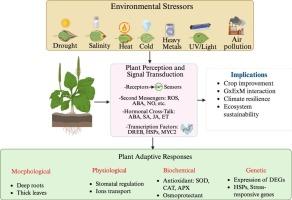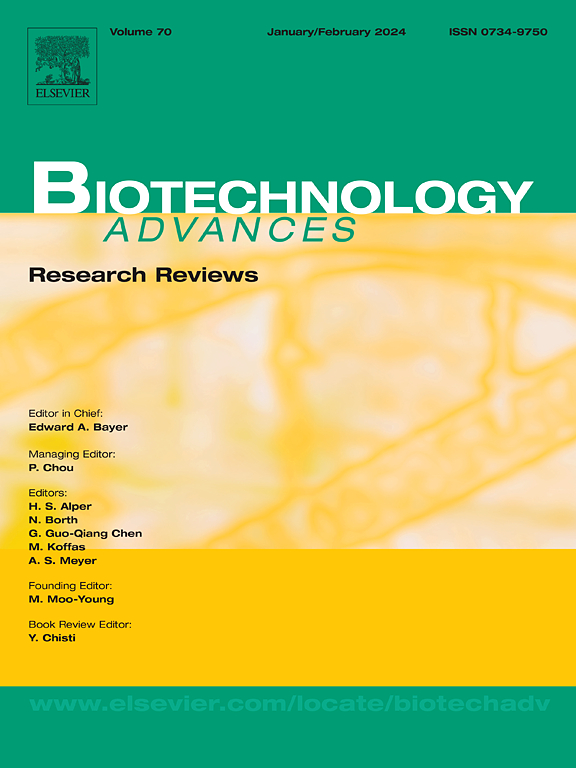The stressing point: how plants respond to environmental stimuli
IF 12.5
1区 工程技术
Q1 BIOTECHNOLOGY & APPLIED MICROBIOLOGY
引用次数: 0
Abstract
This review article examines how environmental stress affects plant development by changing their morphological features, physiological processes, biochemical pathways, and gene regulatory mechanisms. Eukaryotic plants face major agricultural challenges because they are stationary, making them constantly susceptible to adverse conditions such as drought, salinity, extreme temperatures, and heavy metal contamination. Key findings highlight the genetic and molecular factors that drive adaptive responses, including the production of osmoprotective and antioxidant compounds that improve stress tolerance. For instance, the review shows how wheat produces proline during water stress and discusses the role of differentially expressed genes (DEGs) in maize. It also covers how salt stress responses are regulated by Dehydration-Responsive Element-Binding (DREB) and basic/helix-loop-helix (bHLH) transcription factors, as well as how gene expression in sugar beet is controlled by non-coding RNAs. Furthermore, we examine how plants adapt to thermal and light stress, describing physiological and biochemical changes, including the regulation of heat shock proteins and gene expression under intense light conditions. Overall, our review emphasizes that plant stress adaptation relies on complex genetic, physiological, and biochemical mechanisms that support the development of resilient crop varieties and sustainable farming practices.

重点是:植物如何对环境刺激作出反应
本文综述了环境胁迫如何通过改变植物的形态特征、生理过程、生化途径和基因调控机制等方面影响植物的发育。真核植物面临着重大的农业挑战,因为它们是静止的,使它们经常容易受到干旱、盐度、极端温度和重金属污染等不利条件的影响。关键发现强调了驱动适应性反应的遗传和分子因素,包括提高应激耐受性的渗透保护和抗氧化化合物的产生。例如,这篇综述展示了小麦在水分胁迫下如何产生脯氨酸,并讨论了差异表达基因(DEGs)在玉米中的作用。它还涵盖了脱水反应元件结合(DREB)和基本/螺旋-环-螺旋(bHLH)转录因子如何调节盐胁迫反应,以及甜菜基因表达如何由非编码rna控制。此外,我们研究了植物如何适应热和光胁迫,描述了生理和生化变化,包括在强光条件下热休克蛋白和基因表达的调节。总之,我们的综述强调,植物的逆境适应依赖于复杂的遗传、生理和生化机制,这些机制支持了抗逆性作物品种和可持续耕作方式的发展。
本文章由计算机程序翻译,如有差异,请以英文原文为准。
求助全文
约1分钟内获得全文
求助全文
来源期刊

Biotechnology advances
工程技术-生物工程与应用微生物
CiteScore
25.50
自引率
2.50%
发文量
167
审稿时长
37 days
期刊介绍:
Biotechnology Advances is a comprehensive review journal that covers all aspects of the multidisciplinary field of biotechnology. The journal focuses on biotechnology principles and their applications in various industries, agriculture, medicine, environmental concerns, and regulatory issues. It publishes authoritative articles that highlight current developments and future trends in the field of biotechnology. The journal invites submissions of manuscripts that are relevant and appropriate. It targets a wide audience, including scientists, engineers, students, instructors, researchers, practitioners, managers, governments, and other stakeholders in the field. Additionally, special issues are published based on selected presentations from recent relevant conferences in collaboration with the organizations hosting those conferences.
 求助内容:
求助内容: 应助结果提醒方式:
应助结果提醒方式:


